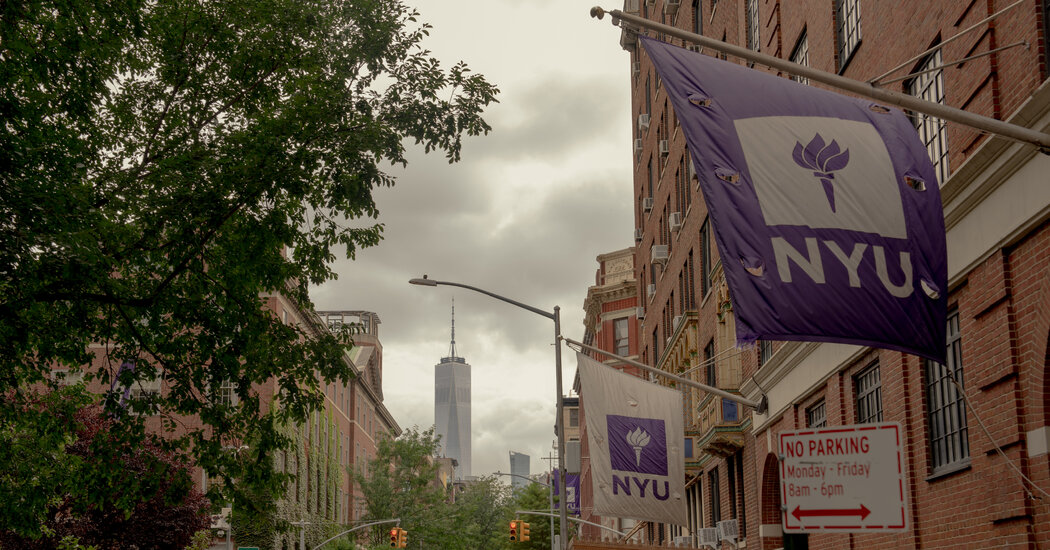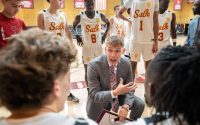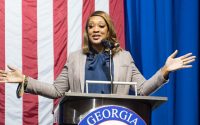Six Men’s Deaths in Baltimore Bridge Collapse Shake City’s Hispanic Community
Jose López was one of the first in his family to leave Guatemala for a new life in the United States. He wanted work that would give him a better life. So in the early 2000s he found his way to Baltimore, a city where strivers have long found a home and where Mr. López made one for himself and his family.
He found fellow Guatemalans along with Mexicans and others who had left their countries with similar aspirations. He and his wife settled in a house with a porch, his brother Jovani said. The couple had two children, and Jose López often picked them up from school.
About two years ago, he took a new job, working late nights for a contractor repairing roads on Maryland bridges.
He didn’t mind the arduous hours because he viewed his purpose in life as providing food and shelter for his family, Mr. López’s older brother said.
Early Tuesday morning, a friend of both brothers called Jovani López with harrowing news. A ship struck a bridge that Jose López had been working on, causing it to collapse and sending six workers, including Mr. Lopez, into the Petapsco River. Hours later, Jovani López learned that they were dead.
“He was there to work,” Jovani López said on Thursday outside of the family’s home, where relatives embraced and cried. “Who could’ve ever imagined this?”
That question has echoed across Baltimore’s Hispanic community, as it mourns the six workers.
Five of them have been identified by the authorities, relatives or advocacy organizations: Mr. López, who was in his 30s; Alejandro Hernandez Fuentes, 35, also of Baltimore; Dorlian Ronial Castillo Cabrera, 26, of Dundalk, Md.; Miguel Luna, who was in his 40s and from El Salvador; and Maynor Yasir Suazo Sandoval, who was in his 30s and from Honduras. The authorities have said there are six victims.
They were men who had gone to work on a bridge late into the night, in cold temperatures, to ensure that thousands of other Marylanders could use the Francis Scott Key Bridge to make it to their own jobs.
“And they never came home,” said Lucía Islas, a community leader and president of Comité Latino de Baltimore, a nonprofit that assists the Hispanic community. Ms. Islas and other Latino community leaders have hosted meetings this week to highlight how immigrants often do the difficult and dangerous jobs that others do not want to do, such as roofing and road maintenance.
Last year, six highway workers, including two brothers from El Salvador and a father and son, were killed on a busy highway outside Baltimore when they were struck by a car that plowed into their work zone.
The dramatic ship crash, collapse of the bridge and the frantic search for survivors have captured the attention of the city and the country, but the disaster has cast a particular pall over the growing Hispanic community in and around Baltimore. From Dominican barbershops and Mexican taquerias to markets stocked with mango and tamarind candy, communities such as Highlandtown, Dundalk and Glen Burnie have been transformed by waves of immigrants from Latin America.
Zeke Cohen, a Baltimore City Council member whose district includes Highlandtown, said that the city had benefited by embracing its immigrants. He credited them for starting businesses, lowering vacancies in the housing market and reversing the blight that had marked some neighborhoods.
“It’s a blessing.”
Even as they are grateful for the support and concern, friends and family members of the victims said they were preoccupied with unanswered questions, none more painful than whether more could have been done to save the men.
Donna Batkis, a clinical social worker in Baltimore who has been helping the victims’ families, said in an interview that they were in shock.
The bodies of Mr. Fuentes and Mr. Cabrera were recovered on Wednesday, the authorities said. But the families of the four men whose bodies have not been recovered have described being in a “purgatory of grief” because they can’t plan a funeral, Ms. Batkis said.
They have repeated two questions in recent days, Ms. Batkis said: “Where’s my loved one? And what’s next?”
“Waiting is a very hard space to be in,” she said. And the family members’ anxiety is compounded by the fact that many of them don’t speak fluent English, and some of them are not legal residents, according to Latino community leaders.
Maryland Gov. Wes Moore and other top officials have voiced support and concern for the families of the men who were killed. On Wednesday, Tom Perez, a senior adviser to President Biden and a former Maryland labor secretary, met with families, Ms. Batkis said.
“Somos unidos,” Mr. Perez told the families, according to Ms. Batkis. “We are united.”
Over the last couple of days, relatives have consoled each other talking about the loved ones they lost.
Mr. Luna, of El Salvador, was married, had three children and had been living in Maryland for at least 19 years. Mr. Suazo, of Honduras, had immigrated to the United States more than 17 years ago, and he was married with two children. His brother, Carlos, said in a statement that Mr. Suazo was talented at repairing and operating all kinds of machinery, and that he had dreamed of starting his own small business.
As he grieves his brother, Jovani López, who emigrated from Guatemala about seven years ago, said he had mostly kept to himself.
At night, when he has trouble sleeping, he has tried to focus on the good memories: Jose López’s laugh; the hot, humid days back at their childhood home in Guatemala, near the eastern city of Chiquimula, where they played soccer; and the lives they had built in Baltimore.
But when daylight comes, he goes out to see the destroyed Key bridge. For hours on Wednesday night, as rain rippled across the Patapsco, he looked out toward the mangled mountain of steel miles away. He could see the ship. He could see the boats encircling it.
“All I could think was, Where is my brother?”
Miriam Jordan, Emiliano Rodríguez Mega and Jacey Fortin contributed reporting.


